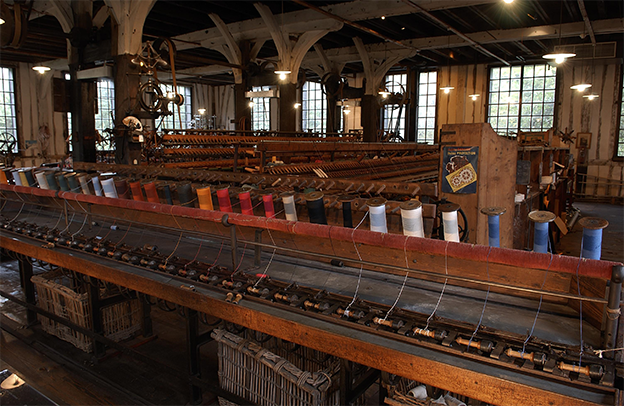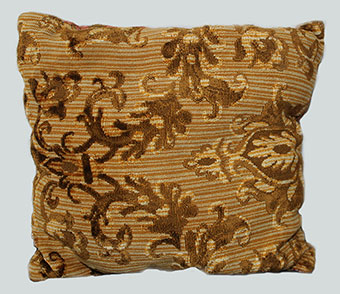 - Welcome - textil fiber
- Welcome - textil fiber
Textile material
Textiles are omnipresent in our daily lives: fabrics, tapestries, upholstery, clothing, and sheers. This material is either of vegetable origin, such as hemp, cotton, or linen, or of animal origin, such as wool or silk.
Embroidery
Embroidery requires extreme precision, patience, and knowledge of diverse techniques. A simple needle is enough to do the work, but several techniques and stitches are to be known, like the stitch of Boulogne, the stitch of Lunéville, the stitch of Beauvais, and even the Bayeux stitch.
The Bayeux tapestry, which is embroidery, was crafted in the 11th century on linen canvas, with a length of about 70 meters. The scenes depicted evoke the conquest of England by William the Conqueror.

Bayeux tapestry is kept in Normandy in the west of France in the museum of Bayeux City,
Hatter
The hatter works with different materials and shapes according to fashion and time. Headgear includes caps, beanies, berets, and hats.
The top hat, a symbol of social success, became a must for high society at the beginning of the 19th century. Around 1850, the silk hat gave way to the felt hat. It has the advantage of being waterproof, being made without glue, and retaining its natural evaporation property.
The following video concerns Lock & Co., based in London, which was the supplier to Charlie Chaplin.
Lacemaker
Lace is a subtle assembly of fine fibers, such as cotton, linen, silk, and nylon. The ornamentation draws inspiration from architecture or flowers. There is a wide range of techniques to create designs, such as bobbin lace, needle lace, crochet, and machine lace.
Bobbin lace developed during the Renaissance in Europe, first in Italy and then in Flanders. Embellishing your outfit with lace sleeves and collars became a must at that time. Demand led to the development of several centers. Juggling with spools of thread takes practice and concentration.
Many laces are known in France, such as Bayeux lace in Normandy, Valenciennes in the Nord Department, Mirecourt in the Vosges, Puy-en-Velay lace in the Auvergne-Rhones-Alpes region, and throughout Europe in Belgium in Bruges, Gozo in Malta, Hungary, Italy, Spain, Germany, and Portugal.
Needle lace emerged in Venice, then in France in Alençon in 1665. This technique requires first tracing the desired pattern on parchment. The most famous workshops are in Alençon in Normandy, Lunéville in Meurthe-et-Moselle, Burano in Italy, and Halas in Hungary.
Maltese lace
Maltese lace had developed during the time of the Knights of the Order of Malta. It was used to decorate the clothes of wealthy people and the clergy. These lace workshops ensured income for the poorest. The Maltese cross is one of the motifs used.
Hamilton Chichester revived this craft, which had almost disappeared in the 19th century, notably with bobbin lace influenced by Genoese patterns and Valenciennes lace.
Upholsterer
The upholsterer realizes textile works such as wall hangings, curtains, and pieces intended for furnishing. The upholsterer on the high warp worked vertically, and the worker on the low warp worked horizontally.
The tapestry is a collaborative work between the painter and the upholsterer. The outline is drawn on cardboard to be transcribed, with the shades available. The painter has unlimited resources in terms of colors, unlike the upholsterer, who has limited shades and must find a good rendering. He juggles the colors, looking for the best possible combination.
The manufacture of Beauvais contributed to the renown of this art around the world. Some achievements were exhibited at world exhibitions.
The Gobelin factory has been working since 1826 only with vertical trades using the high warp technique.
Weavers
The weaver performs a crisscross of threads on a loom. The meshing moves forward with the back and forth of the shuttle. He can shape fabrics made of a single color or more elaborate models.
The French term "Tisserand" was generally used for the artisan working at home on a loom he owned. His clients were mainly local and regional manufacturers.
The looms were improved constantly. In 1733, the loom equipped with a flying shuttle was an invention of Mr. John Kay, an Englishman. In 1767, the Jenny spinning machine enhanced the stage of the transformation of fibers into thread. In 1785, the mechanical loom was put in place by Edmund Cartwright. In 1801, the Jacquard machine was invented.

Corderie Vallois Museum is located in the Seine-Maritime department, 5 mi from Rouen City (Ropes Museum),
Copyrights: © Réunion des Musées Métropolitains Rouen Normandie, Corderie Vallois © Yohann Deslandes
Weavers of Rouen fabrics
Rouenneries' refers to fabrics made in the city of Rouen. This city experienced a great boom in drapery in the Middle Ages. The nearby river port allowed vessels to unload goods from distant lands in the Orient.
Indian fabrics were a source of inspiration for French manufacturers. In the east of France, in Mulhouse, a manufacturer was established in the 18th century. In the Paris region, the manufacturing center was located in Jouy-en-Josas a few years later. Then the city of Rouen began printing colored fabrics. Finally, at the national level, the cities of Nantes, Lyon, and Marseille established manufacturing centers.
Fabrics were made in many colors, but the dominant colors were madder red, indigo blue, and yellow reseda. Indian craftsmen knew how to fix the colors permanently. Some previously engraved wooden dies allowed the printing of these canvases. A few works are exhibited in Lorient at the Museum of the Compagnie des Indes.


Photos credit www.les-tissus-anciens.com with very beautiful fabrics (online sale).
Weavers for Silk
Silk was China's monopoly for a long time. Any Chinese revealing the secrets of sericulture risked being sentenced to death.
The cultivation of the mulberry tree was introduced in France at the beginning of the 14th century with the arrival of the popes in Avignon.
King Louis XI tried for the first time to install a silk production plant in Lyon, but to no avail. He made a second attempt in the city of Tours by employing experienced artisans in the technique, mainly Italians and Greeks, and this time it was a success. François Ier relaunched the Lyon activity.
Before the revolution, production in France amounted to 7,000 metric tons per year. A hundred years later, it is around 25,000 tons.
The production of silk remains complex. It declined a few years later and had to face artificial production. We have been witnessing the revival of small units these past few years.
Velvet weavers
In the Middle Ages in Amiens, the trade of drapers and "waidiers" (pastel merchants) prospered. Jean-Baptiste Jourdain de Thieulloy held various positions, including importer-exporter. This activity brought him prosperity, which enabled him to expand his Saint-Gratien property. He received spices and indigo in exchange for this trade.
Amiens makes Utrecht velvet and cotton velvet. It was under the reign of King Louis-Philippe (from July 1830 to February 1848) that cotton velvet took the name Amiens velvet. This velvet was shipped worldwide. Recognized for their quality, some fabrics have been made especially for Versailles.
The piece of velvet was first woven and inserted between rollers to take the shape of the desired pattern. These dies were made of wood or metal.
The Amiens factories manufactured furnishing fabrics and some articles such as pillows, stuffed animals, and caps.


Cushions made of velvet
